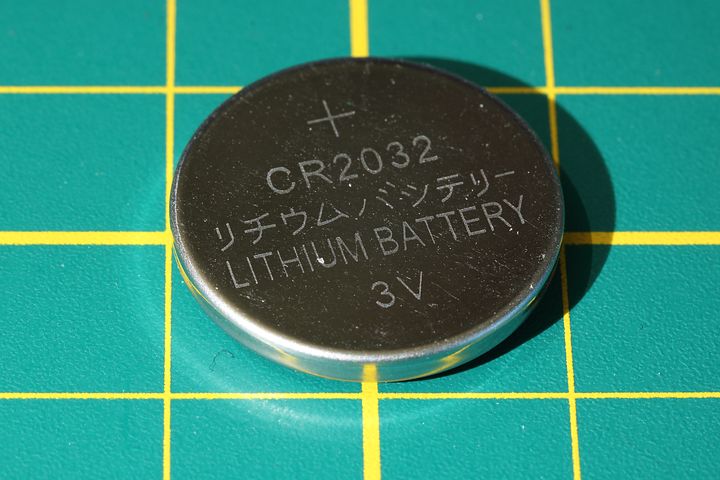 The need for a lightweight rechargeable cell that can power the teeming growth of portable electronic equipment led to the creation of lithium-ion cells. It then began with mobile phones and cameras. Gradually, till date, this has become the common power source for most electronics ranging from cordless power tools to big scale energy appliances and automotive applications.
The need for a lightweight rechargeable cell that can power the teeming growth of portable electronic equipment led to the creation of lithium-ion cells. It then began with mobile phones and cameras. Gradually, till date, this has become the common power source for most electronics ranging from cordless power tools to big scale energy appliances and automotive applications.
An analysis of the recent life cycle of lithium-ion (Li-ion) highlights the importance of recycling to reduce its environmental and health impacts. The study, published last month by the US EPA, examined a range of lithium battery chemistries, including:
- Lithium-manganese oxide
- Nickel-cobalt-manganese oxide battery
- Lithium Phosphate- iron.
Lithium batteries have been found that use nickel and cobalt cathodes as well as the processing of solvent-based electrodes. These include resource depletion, global warming, ecological toxicity, and impacts on human health.
The greatest impacts are those related to the production, processing and use of cobalt and nickel metal compounds, which according to the report can cause respiratory, pulmonary and neurological effects in exposed persons. The toxicity impacts of lithium are also highlighted.
The report notes that the recovery of metals at the end of life can significantly reduce the impacts of the life cycle. This is due to the extraction and processing of raw materials are the main contributors to the effects of all the chemicals in the pile. Three recycling processes were analyzed:
- Hydrometallurgical recovery
- Pyrometallurgical recovery (high temperature)
- ‘Direct recycling ‘, which allows a higher percentage of recovered battery materials, but is still in the pilot stage.
It may also be possible in the future to renew batteries at the end of life for use in computers or other electronic devices, or to rejuvenate them with the new electrolyte.
Historically, battery recycling has focused on cobalt recovery because its value has increased in response to the increased demand for battery manufacture. However, the use of cobalt in batteries is expected to decrease as battery technology evolves.
In addition to cobalt, battery recyclers can recover lithium, nickel and other materials. The demand for lithium to grow significantly due to increased use of Li-Ion batteries in electric vehicles. Recycling will help preserve virgin resources and reduce their environmental impact.
The report identifies a number of opportunities to improve the life cycle impacts of Li-ion batteries, which include:
- increasing the life of the battery
- reducing the consumption of cobalt and nickel
- The incorporation of recovered material in the production of the pile.
Why making the lithium-ion battery your choice?
The most important factors of the lithium-ion cells are the high number of discharge cycles and high energy density. This factor has made the Custom Lithium-Ion Battery Pack the most valued in vehicles and mobile phones. Aside from that, there are several other ways on which the lithium battery stands superior to other kinds of battery chemistries. The lithium-ion batteries are able to discharge at very high power and are also able to get a fast recharge. The lithium-ion cells are not hazardous to operate at a partial state of charge. It has high operating flexibility than lead-acid batteries.
There is a unique connection between lithium-ion and the environment. Charging lithium-ion cells produce no gas emissions nor heat loss because the charging inefficiency is very minimal. This makes it safe to use lithium-ion batteries in locked up places. They contain no controlled toxic materials like the cadmium, lead, and mercury.
Standard features of lithium-ion batteries
These are the main standard features of the lithium-ion:
The cell structures – The cell structure for bigger capacity cells utilizes a kaleidoscopic plan with strong metal dividers. This gives the ideal blend of pressing density, warm management and security required for modern and vehicle applications.
Battery Management Systems – Battery Management Systems (BMS) are a basic component for the protected operation of multi-cell lithium-ion batteries. The essential function of the BMS is to acquire every one of the cells a battery to a similar state of charge and to keep up them in that condition for the duration of the life of the battery. The BMS accomplishes this by checking the voltages of every individual cell inside a battery. Cells with higher voltages are discharged to align them with the remainder of the pack.
The immense measure of information assembled by the BMS allows the battery condition to be watched accurately and gives updated security differentiated and traditional battery innovation. This extended knowledge in like manner diminishes the costs for support and expands the working presence of battery systems.
Quality benefits and energy saving features of lithium-ion batteries
There are so many benefits of lithium-ion batteries. The most relevant ones are listed below.
- They are fast charging cells unlike the lead-acid battery
- The lithium-ion batteries have high rate discharge with steady capacity
- Small floor loading and footprint
- Possess high energy efficiency compared to lead-acid batteries
- Steady power security
- It has a long life cycle and energy
- Got a partial state of charge rate
- Has a minimal cost thermal management
- Absence of gas emission
- No recycling limitations and non-toxic
- Without voltage compensation, it has wide charging temperature rang





Leave a Comment